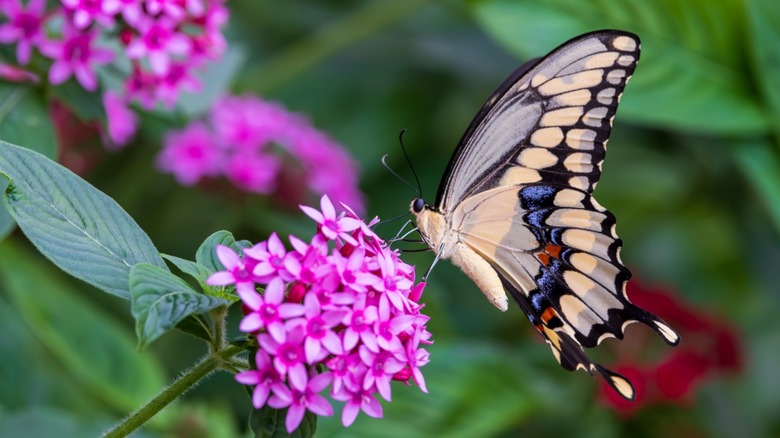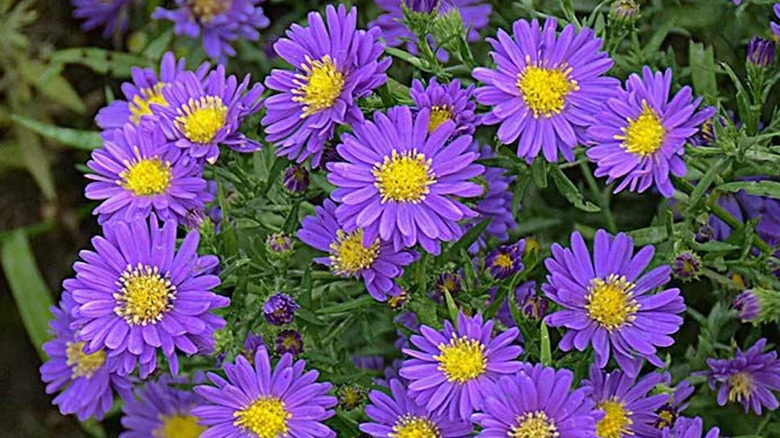This Stunning Purple Perennial Will Light Up Your Fall Garden — And Attract Butterflies
The changing seasons from summer to fall, bring with them stunning autumn leaves that light up the garden with their warm and comforting hues. And, just as summer blooms start to fade, 'Kickin Purple' aster (Aster novae-angliae 'Kickin Purple”) bursts onto the scene, flooding the garden with deep violet flowers that sport golden-yellow centers. This compact perennial brightens the yard while providing butterflies, songbirds, small mammals, and specialized native bees a reliable nectar source. Its long bloom period from late summer through fall provides you with a gorgeous perennial to grow in your garden for an autumn bloom.
'Kickin Purple' aster is a cultivar of New England aster, one of the two best-known asters in American gardens, along with New York aster. Both were once part of the genus Aster but have been reclassified into the Symphyotrichum genus. Thanks to its dense, mounded shape, a single plant produces a ton of blossoms, creating an impact that feels larger than its modest size. It thrives in borders, containers, and cutting gardens, producing long-lasting color just when landscapes might otherwise look tired. Even better, this beautiful purple flower that deer will avoid is also cold tolerant, so your floral show isn't easily spoiled by wildlife or early chills.
Up close, the daisy-like flowers pop against green foliage, making each bloom cheerful and vivid. While other plants are winding down, 'Kickin Purple' aster keeps the garden buzzing, offering one of fall's most reliable color shows. Its compact habit and abundance of blooms makes it a standout for late-season interest, supporting local pollinators when other blooms may have passed their prime.
Caring for 'Kickin Purple' asters in your garden
Hardy in USDA zones 5 through 9, 'Kickin Purple aster prefers full sun for the heaviest bloom. It grows best in well-drained, nutrient-rich soil amended with organic matter. At maturity, plants reach about 23 to 25 inches tall and wide. Giving it enough space and airflow keeps the plant healthy and helps prevent problems like mildew or weak stems. Mulching 1 to 2 inches around the base also suppresses weeds and retains soil moisture, which keeps the roots happy and the foliage looking fresh.
Watering and fertilizing are simple. Keep the soil consistently moist during the first season so roots establish well, but once it's settled, it usually only needs occasional watering. Apply a balanced slow-release fertilizer in early spring to encourage strong stems and abundant flowers. Deadhead spent blooms if you want a tidier look, or leave the seedheads for winter interest. Cut back any browned foliage in spring, and divide clumps every few years to keep growth dense and vigorous.
'Kickin Purple' aster looks great with late-season perennials and native grasses. Red switchgrass or goldenrod adds texture, height, and contrast, while other asters create a layered, eye-catching display. Its sturdy growth and long bloom period makes it a reliable choice for gardeners who want a showy, low-maintenance plant. Better still, this end-of-summer perennial will keep your garden full of pollinators through fall.

